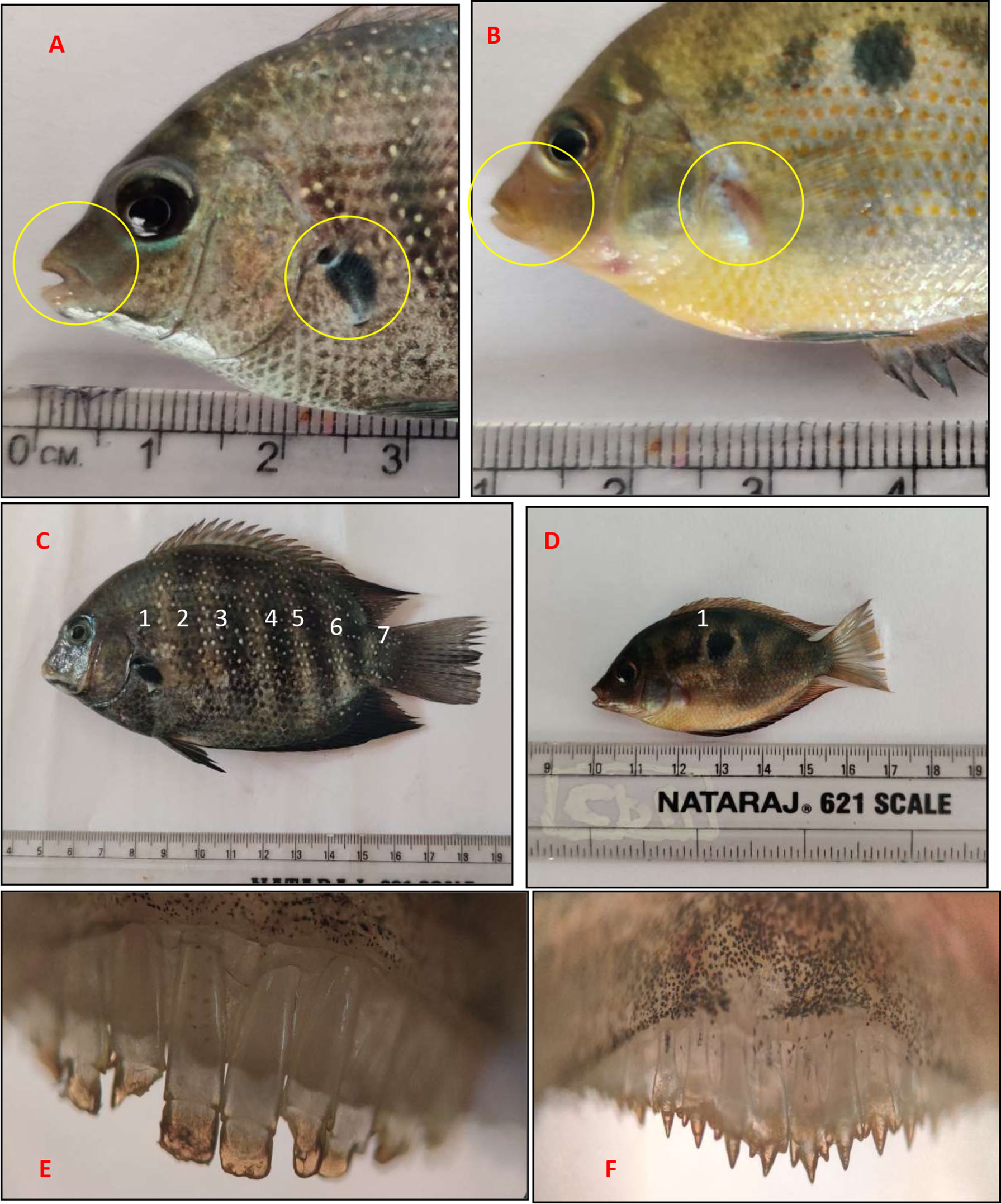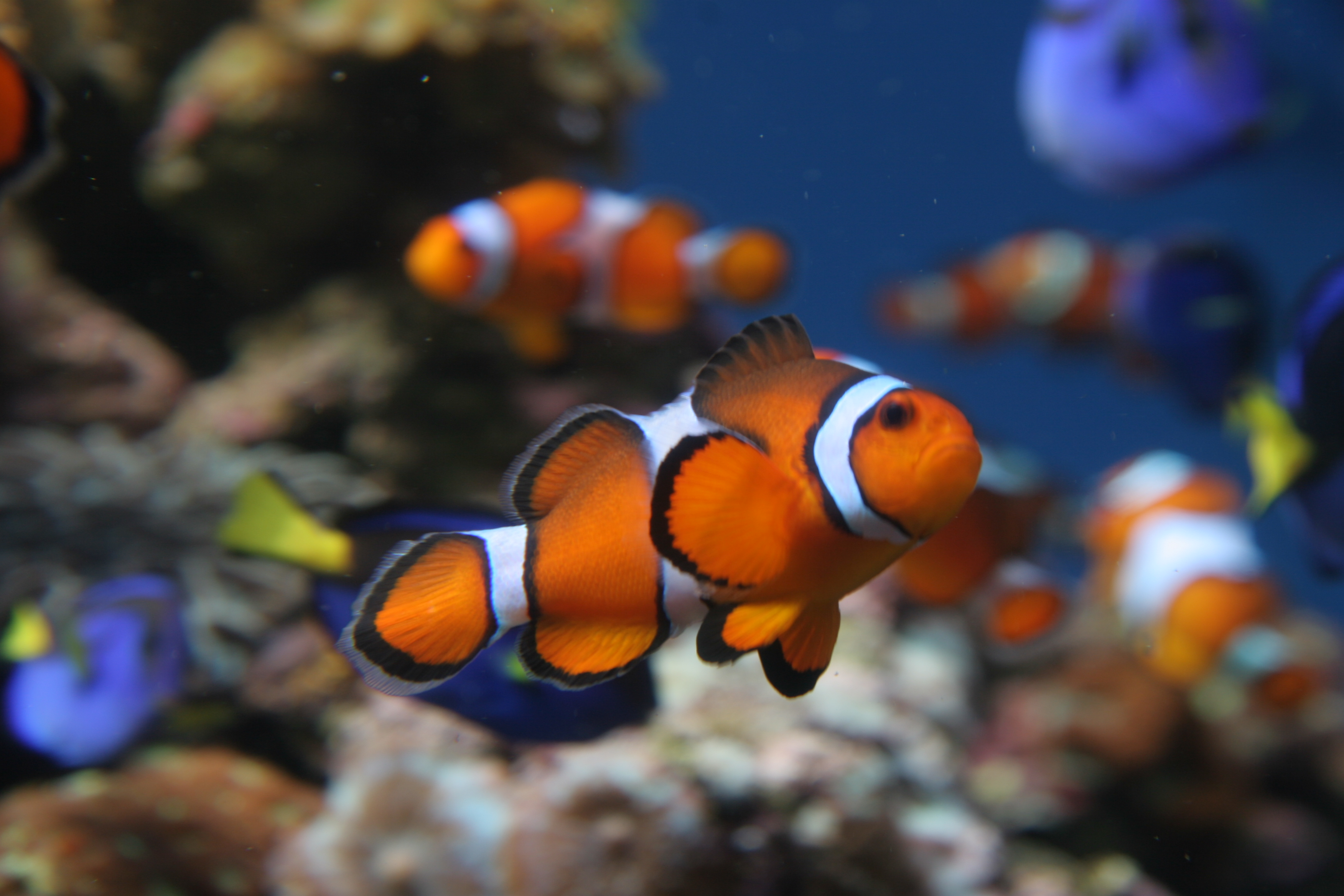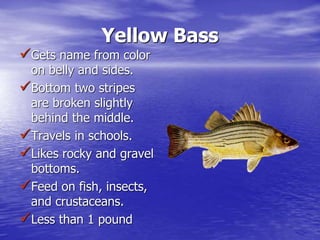Culture of Hybrid Striped Bass In the U. S. - ppt download

Striped Bass ( Morone saxatilis ) Popular sport fish caught in U. S. marine coastal waters
By. Leonard Lovshin. Department of Fisheries and Allied Aquacultures. Auburn University, Alabama, USA.
Popular sport fish caught in U. S. marine coastal waters.
Distribution of Striped Bass in U. S.
Lives in saltwater but spawning is in freshwater ( anadromous ). Migrates up coastal rivers in the Spring. Several land-locked populations are established in U.S. Males and females reach sexual maturity in 3 years and 4 years, respectively. Life span is 30 to 40 years. Growth - Reaches 32 kg in ocean.
Commercial Fishery – Striped bass is a prized sport and food fish. The commercial catch dropped from 15 million lb in 1973 to less than 1 million lb in Presently, the commercial catch is about 6 million lb/yr. Sport and commercial fisheries are heavily regulated. Fingerling stocking programs into fresh and salt water began in the early 1970’s.
Life History. Food habits – predacious. Growth – 4 to 5 lb in freshwater lakes. Reproduction – Lives and spawns in fresh water. Migrates up rivers and streams to shoal areas in Spring to spawn. Males and females reach sexual maturity in 2 and 3 years, repectively. Life span is 5 to 6 years.
Distribution of white bass in U. S.
How to distinguish among striped, white and hybrid basses
Sunshine bass – Striped bass male x white bass female. Both hybrid crosses are stocked into fresh waters to improve sport fishing. Both crosses are fertile and will reproduce in natural waters with adequate spawning habitat. The sunshine bass is the most widely cultured hybrid because it is easiest to produce fingerlings. Hybrids are better for culture than striped bass because they are more resistant to handling and warm water temperatures in culture units. Hybrids grow faster than white bass and will reach 20 lbs in natural waters.
Water temperature – 1 to 33o C; optimum for growth is oC. Salinity – 0 to 25 ppt. Dissolved Oxygen – optimum is 6 – 12 mg/l; can withstand 1 mg/l for short periods. Alkalinity and Hardness – grow best in waters above 100 mg/l. pH – 7.0 to 8.5 ideal. Salt is added to freshwater with low cloride ion concentration to improve growth and survival.
Spawning water temperatures – 15 to 21oC. Obtaining broodfish. White bass – Some domestigated stocks but most are captured from the wild with nets and hook and line. Striped bass – Domestigated brooders not available, all are captured from the wild. Only state and federal agencies can use nets and electrofishing. Private producers must catch brooders by hook and line and transport them to the hatchery.
Eggs can be checked to determine if they are ripe and ready for fertilization..
White bass eggs are adhesive and must be treated to remove adhesiveness before placement in incubators. Striped bass eggs are non-adhesive and need no treatment..
Egg incubation – McDonald jars are used to incubate the eggs. Eggs hatch in 40 to 48 hr after fertilization in 15 to 18o C water. Fry begin to feed 4 to 8 days after hatch. Fry are about 1mm at hatch.
( daphnia ) Sunshine bass – small zooplankton. ( rotifers ) Ponds must be carefully filled and fertilized to prepare the proper food organizm for the type of hybrid fry stocked. Stocking rate – 250,000 to 500,000/ha.
Palmetto bass – 40 to 50 % Sunshine bass – 10 to 25 % Feed training: In ponds – Crumbled feed can be fed to 14 to 21 day-old. fingerlings. Bass will learn to eat feed. In tanks – Remove 4 week-old fingerlings from ponds and stock them at high densities in tanks receiving flowing water. Feed them nutritionally complete crumbled diets.
Feeding – Bass are feed a 40 % protein floating diet 1 to 3 times/day starting a 5% body weight/day, reduced to 3 %/day as the bass grow.
Survival is 85% and average weight is 125 to 225 g..
Feeding – Bass are fed 1 to 3 % body weight daily with a 40 % protein floating diet. Harvest – Bass reach 1.25 to 1.5 lb with a survival of. 90 % by October - November. Yields – 4,000 to 5,000 kg/ha with aeration. 55% of the hybrid striped bass harvest in the U. S. are grown in ponds.
45 % of the hybrid striped bass harvested in the U. S. are from tanks.
Fresh – 89 % of U. S. harvest is sold whole on ice. Price to farmers is $2.00/lb.
High cost of production; high market price. Difficulty obtaining broodfish. Legal restrictions to sell cultured hybrid striped bass in many states because it is considered a sport fish. Each fish must be individually tagged.
U. S. farmed harvest Weight – 11.2 million lbs. (5.1 million kg ) Hybrid striped bass is 5th in weight of food fish harvested in the U. S. U. S. wild capture – Weight million lbs. ( 3.1 million kg ) THE END.

Culture of Hybrid Striped Bass In the U. S. - ppt download

Culture of Hybrid Striped Bass In the U. S. - ppt download

Winter Bass Fishing: Best Bass Fisheries in North Florida

hybrid-striped-bass-id-diagram.jpg

Hybrid striped bass - Wikipedia

Biomolecules, Free Full-Text

Culture of Hybrid Striped Bass In the U. S. - ppt download

Frontiers Orange Chromide, Pseudetroplus maculatus (Bloch., 1795): A Potential Euryhaline Fish Model to Evaluate Climate Change Adaptations in Fishes

Aquarium of the Pacific

Classical Music and Instruments Dark Powerpoint Template and Google Slides Theme

Culture of Hybrid Striped Bass In the U. S. - ppt download

Freshwater Fish ppt. (1).ppt

Music in the 70's Education Abstract Powerpoint Template and Google Slides Theme

Optophysiology: Illuminating cell physiology with optogenetics